|
Sony E 16mm f/2.8 (SEL-16F28) - Review / Re-Test - Analysis |
|
Lens Reviews -
Sony NEX
|
|
Page 2 of 2

Distortion
The Sony lens produces a slight amount of pincushion distortion (~0.6%) which is usually not objectionable in field conditions.
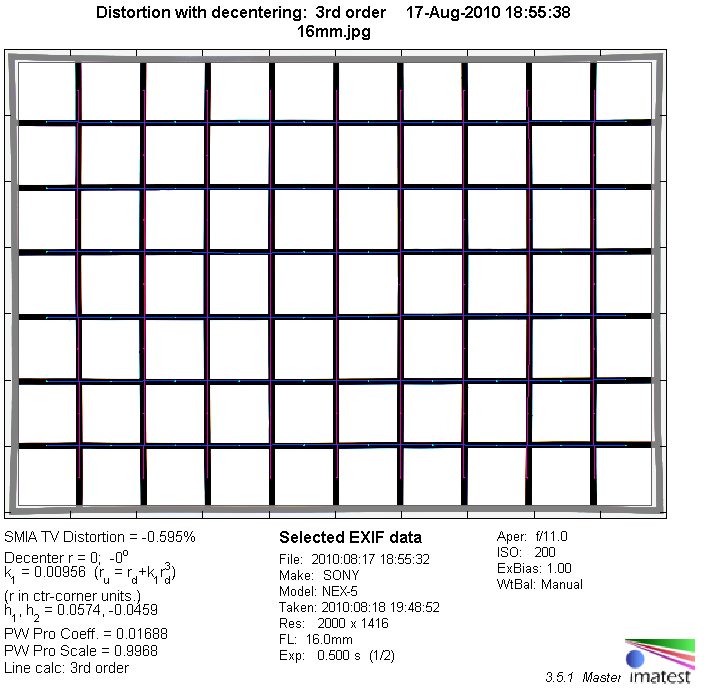 Coupled with the dedicated Sony 0.75x converter the results are still decent on paper with a barrel distortion of "just" ~2.2%. However, as you may notice there's a fairly extreme mustache-style sub-distortion underneath which looks rather ugly.
Coupled with the dedicated Sony 0.75x converter the results are still decent on paper with a barrel distortion of "just" ~2.2%. However, as you may notice there's a fairly extreme mustache-style sub-distortion underneath which looks rather ugly.
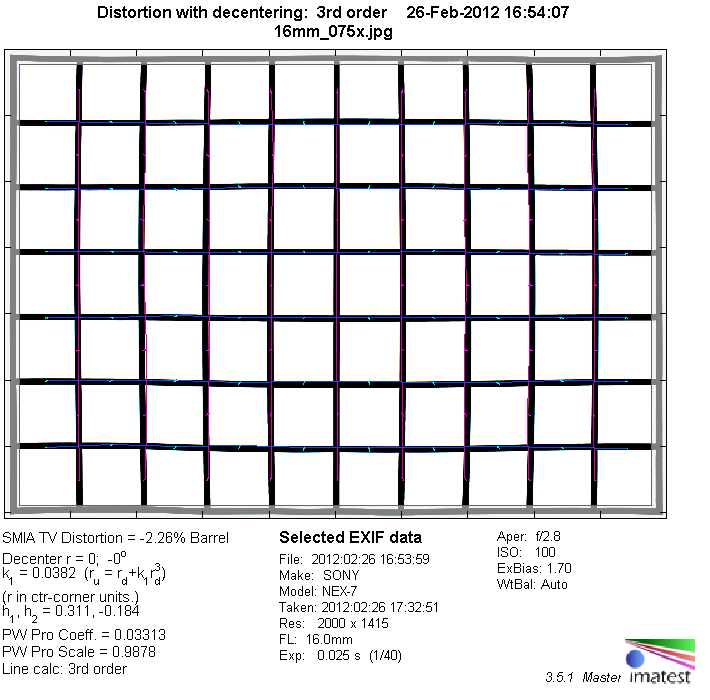
Vignetting
The native vignetting characteristic of the Sony lens is - I'm sorry to say - terrible. At f/2.8 we are talking about a light falloff in excess of 3EV and stopping down doesn't really solve the problem. The measured values are all way beyond our scale for APS-C cameras here.
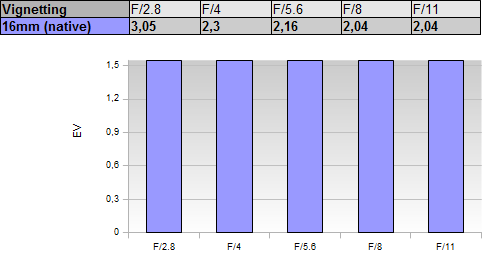 If you activate the vignetting compensation in the camera there's still a fairly heavy light fall-off of ~1.5EV at f/2.8. Even this can be noticeable in field images. Stopping down to f/4 and beyond eases the issue a little bit but it does never reach a negligible degree.
If you activate the vignetting compensation in the camera there's still a fairly heavy light fall-off of ~1.5EV at f/2.8. Even this can be noticeable in field images. Stopping down to f/4 and beyond eases the issue a little bit but it does never reach a negligible degree.
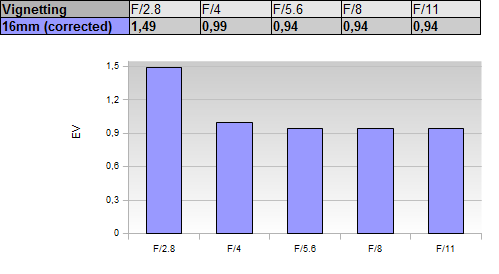 Here's a comparison between the "native" vignetting at f/2.8 and the auto-compensated version by the camera:
Here's a comparison between the "native" vignetting at f/2.8 and the auto-compensated version by the camera:
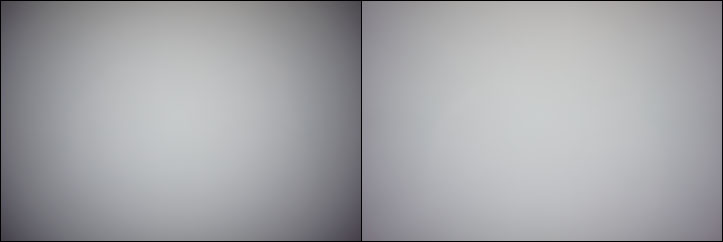 Coupled with the Sony 0.75x converter the "native" vignetting gets a little worse but, frankly, this doesn't matter anymore anyway.
Coupled with the Sony 0.75x converter the "native" vignetting gets a little worse but, frankly, this doesn't matter anymore anyway.
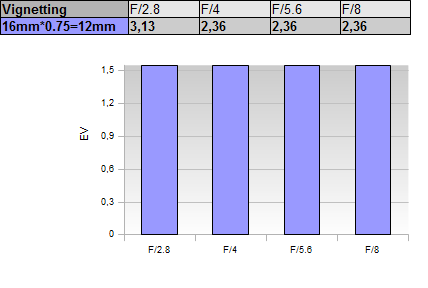
MTF (resolution)
The Sony 16mm f/2.8 is a bit of an oddity in terms of resolution. Normally prime lenses are designed to outclass zoom lenses at their focal length but it seems as if Sony had different design priorities here. The lens is exceptionally sharp in the image center straight from f/2.8 onwards. That's the good news and also where the glory ends.
The lens is capable of delivering acceptable border and corner results on lower resolution NEX cameras. However, the situation is rather hopeless on the 24 megapixel sensor of the NEX 7. At max. aperture there is no border and corner resolution to speak of and there's only a slightly better (albeit still miserable) result at f/4. You can expect good borders between f/5.6 and f/8 although the extreme corners continue to be soft. Diffraction takes its toll from f/11 onwards. Field curvature (flatness of the focus plane) is pretty well controlled.
If you have a positive state of mind about all this you may argue that the NEX 7 is capable of extracting a little more information out of this lens at medium aperture settings compared to a lower resolution NEX. However, the pixel-level sharpness is certainly lower in the outer image regions.
Please note that the MTF results are not directly comparable across the different systems!
Below is a simplified summary of the formal findings. The chart shows line widths per picture height (LW/PH) which can be taken as a measure for sharpness.
If you want to know more about the MTF50 figures you may check out the corresponding Imatest Explanations
Some readers indicated that the converter is actually not all that bad but these comments did probably relate to lower resolution NEX cameras. On the NEX 7 the results are about comparable to the naked lens - which is actually better than expected. However, this is certainly not acceptable for any kind of "serious" photography.
Chromatic Aberrations (CAs)
Another weakness of the Sony lens is the amount of lateral CAs (color shadows at harsh contrast transitions). An average width of around 2.5px at the image borders is very pronounced especially for a prime lens.
 Interestingly the converter manages the keep the situation as is which speaks in favor of the converter quality.
Interestingly the converter manages the keep the situation as is which speaks in favor of the converter quality.
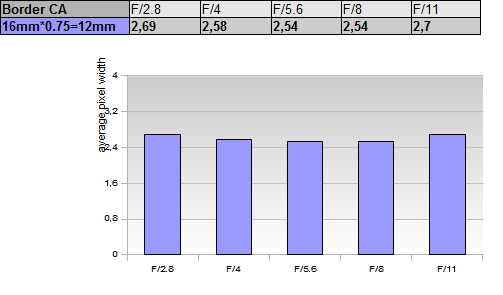
Verdict
The Sony E 16mm f/2.8 may be a controversial lens on lower resolution NEX cameras. However, it seems rather pointless to use it on the NEX 7 - 24 megapixel are way beyond the capabilities of this tiny lens. The center quality is certainly fine but the outer image region is extremely soft at max. aperture and just barely acceptable around f/8. The native vignetting characteristic of the lens is dismal and you should always activate the auto-correction in the camera to reduce the effect. The same applies to lateral CAs which are way too high for a prime lens. The idea of using front-mounted converters is surely attractive but it just doesn't make must sense on this basis. The VCL-ECU1 (0.75x converter) manages to keep the "performance" of the base lens (roughly) but the quality remains unusable except for very casual photography.
The nice build quality and the very attractive form factor of the pancake lens can't overshadow the conclusion that it should just be AVOIDED on the NEX 7. It is a bit hard to understand Sony's logic of releasing a camera with a difficult 24 megapixel sensor without a set of lenses that are capable of exploiting its potential. Hopefully this situation will improve soon ... please!
|